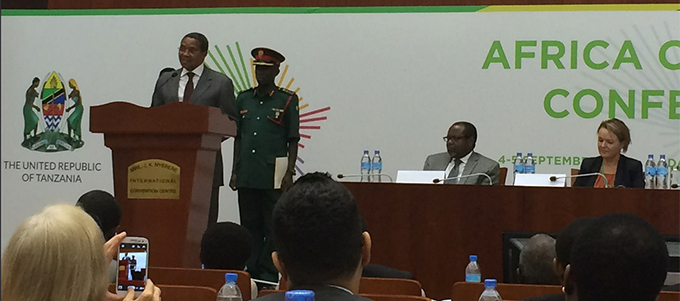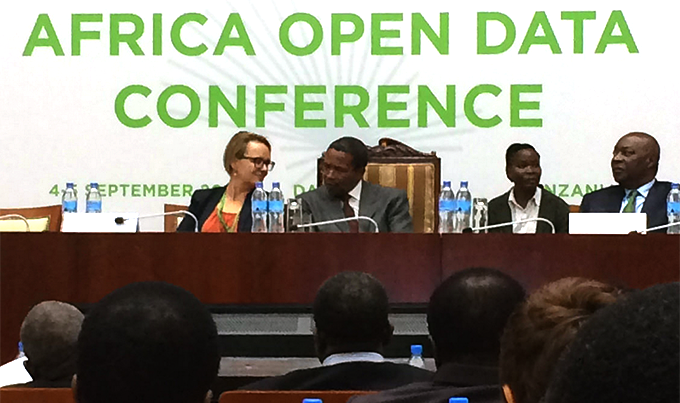
Last month I had the opportunity to attend the Africa Open Data Conference in Dar es Salaam. Over 450 participants from 39 countries (including 24 African countries) attended the conference, whose sponsors included the Government of Tanzania, Code for Africa, the Open Data for Development Network, USAID, Twaweza, the World Bank and many other sponsors and partners. There is a summary of conference activity posted on Storify if you’re interested in checking it out.
The most significant takeaway for me was the combination of high-level engagement and participation of African governments alongside a community of talented and highly engaged local citizens. The opening keynote speech was delivered by the President of Tanzania himself, Dr Jakaya Kikwete, whose presence was announced by the presidential brass band. After his opening speech, the President spent nearly an hour meeting and talking with several of the local groups who were present in the exhibit area. Other African governments were well represented in the ensuing sessions.

It’s especially interesting to witness these developments in light of other recent milestones at the international and regional levels. The Africa Open Data Conference took place just weeks before the United Nations formally adopted its new Global Goals for sustainable development. At the adoption ceremony, Secretary General Ban Ki-moon reiterated the “need to embrace a data revolution” that would fill data gaps, improve quality, and ensure that the benefits of a data-rich society are accessible to everyone in all countries. As I read it, the recommendations in the UN’s Data Revolution Report primarily focus on establishing and strengthening partnerships, setting global standards, and building capacity, particularly within developing countries, and in institutions such as National Statistical Offices (NSOs). The SDG’s and the Data Revolution were mentioned many times in events at the Africa Open Data Conference, usually by panelists representing government ministries or international organizations.

The Consensus emphasizes the need to produce data that is relevant and applicable to the particular needs of local communities. At just five pages in length, Consensus is much shorter than the Data Revolution report, yet in several aspects it is more specific in its vision. To me, the Consensus seems more concerned with catalyzing better development than in measuring better development. The Consensus also prominently features Open data at several points. So perhaps it is not surprising that many of the most interesting activities and events at the Open Data conference were reminiscent of the principles reflected in the Consensus.
The Data Revolution can be viewed from at least two perspectives. One perspective is a high-level view, where the vision is to make sure that the potential for data use is broadly shared, that standards and best practices are developed and applied, and that planning and decisions are data-driven for the benefit of all people. A different perspective is a ground-level view, in which data is a high-potential resource waiting to be tapped to address thousands of local opportunities in ways we can’t yet fully appreciate. We’ve seen both perspectives at work in recent weeks at the UNGA and at the AODC. They are not at all mutually exclusive, and in many respects the development community needs both. The challenge for institutions like the Bank is how best to support and nurture the terrific work already underway. Ready or not, the revolution has already begun.


Join the Conversation